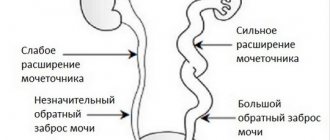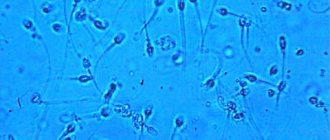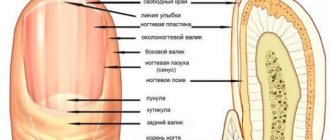Author of the article
Anatoly Shishigin
Reading time: 3 minutes
AA
Sometimes men and women experience urinary incontinence, which people associate with children. Often in children this pathology occurs at an early age, when the child does not control the flow of urine. For adults, this is a problem that cannot be solved on their own. It is important not to hide such manifestations and not be afraid to see a doctor, since such disorders bring not only internal psychological discomfort, but also many everyday difficulties in a person’s life.
Why does urinary incontinence occur?
Urgent urinary incontinence deprives a person of the comfort of life. Often he does not know which doctor to turn to to solve this problem. In men, this pathology is treated by a urologist; in case of illness in women, a gynecologist can help; in some situations, it is necessary to involve the help of neurologists. The difference in specialists is due to the causes of incontinence, which cause various pathological processes.
Various systems of the body are involved in urination, which form toxic substances and elements remaining after metabolic processes. The most important role in the formation of urine belongs to the kidneys, which filter it and drain it through the ureter into the bladder. The frequency and quality of deurination depends on the correctness of this process. The bladder is responsible for the fullness and correctness of contractions when urine is released. The contractions themselves occur with the participation of the sphincter, which, when urine flows, relaxes and releases fluid out.
A patient with incontinence problems does not have volitional control and conscious urination, since the signal for emptying must come from the brain. Urge incontinence refers to enuresis, which is caused by different reasons in men and women. In women, the most common cause of incontinence is atony of the pelvic muscles, and in men - pathology in the prostate gland.
More on the topic: How to treat cervical cystitis of the bladder?
When pressure increases inside the abdominal cavity, regardless of the person’s awareness, the process of urine expulsion occurs. The pressure exerted on the urethral canal at some moments becomes less than the pressure inside the bladder, due to this, fluid outflow and enuresis occur.
When the content of collagen in the pelvic ligaments is low, a pathology occurs that causes weakness of the pelvic floor. This phenomenon is called stress incontinence by experts.
Causes of pathology
The essence of the disease lies in the disruption of the relationship between the receptors in the bladder, which are responsible for bowel movements, and the part of the brain that regulates this process. Violation of this coordination occurs as a result of:
Menopause in women can influence the development of pathology.
- brain injuries that disrupt the conduction of nerve impulses;
- neoplasms growing into nerve endings;
- inflammatory processes in the bladder;
- infectious lesions of the brain or urinary organs;
- difficult childbirth, which led to rupture of the bladder membranes;
- hormonal imbalances, including menopause in women;
- age-related involution.
How to identify the cause of urinary incontinence?
In order to find the cause of urine leakage, it is necessary to submit it for bacterial culture, blood tests and undergo an ultrasound examination and x-ray of the urinary tract. In some cases, the specialist will refer you for cystoscopy. The most informative examination is urodynamic, when a complex analysis is performed on a computer, examining the bladder. Quite often you have to seek help from neurosurgeons, neuropathologists and endocrinologists.
Diagnosis of the disease
Diagnosis begins with determining the causes and severity of urinary incontinence. Collect patient complaints and a detailed history of the development of incontinence. The patient fills out a voiding diary. It should record the time and amount of liquid you drink, the frequency of urination and the number of cases of incontinence.
The anatomical state of the pelvic floor, storage and evacuation functions of the bladder are examined using ultrasound of the bladder or urethrocystography. Laboratory testing of urine is carried out, urine cultures are performed for microflora.
To assess the condition of the urethra, uroflowmetry is used, which allows one to determine the speed and time of urination and the volume of urine excreted, and cystometry, which allows one to obtain information about the tone and contractility of the bladder wall.
If the cause of incontinence is an infectious disease, then it is determined which microorganism caused the disease and its sensitivity to antibiotics and antibacterial agents.
Urgency incontinence in women
Urge incontinence among women is characterized by a sudden and very strong desire to defecate, which provokes the involuntary leakage of urine. Often women don’t even make it to the toilet. This reaction is caused by involuntary muscle contractions in the bladder, in rare cases associated with a subconscious setting.
A similar phenomenon is observed in young children; at the sound of pouring water, they begin to urinate. In some cases, this method can also help for adults who begin to feel the urge to urinate.
If a child in childhood is sent to the toilet before the bladder is filled to its maximum level, then he develops the habit of starting urgent urination with a small volume of fluid in the bladder. As you get older, this leads to a decrease in the volume of the organ and manifestations of urge incontinence. The organ begins to contract involuntarily as soon as it fills with fluid.
Also, contractions of the bladder can be caused by various pathologies, which include tumors, inflammation in the body, urolithiasis and other diseases of the urinary system. When taking certain medications, a number of involuntary contractions of the organ occur, as in cases of surgery in the pelvic area.
More on the topic: Why does a child put pressure on the bladder?
Excessive intake of certain drinks and foods by a person causes the same contraction of the muscles of the organ without conscious control. All these factors are the main symptoms of urgent type enuresis, so it is necessary to adhere to a certain diet that excludes from the diet all foods that provoke and irritate contractions of the bladder.
When an organ cannot hold a large volume of fluid, it needs to be trained. To do this, a person must consciously suppress the desire to empty the bladder for a certain time, and gradually increase these intervals. Only such tinting can eliminate the symptoms of urge incontinence and extend the time between urinations.
Treatment prognosis and preventive measures
Involuntary urination is an extremely unpleasant condition that significantly impairs the quality of life and causes a lot of problems and troubles. To prevent the occurrence of the disorder, doctors recommend adhering to certain rules. They are simple and do not require supernatural efforts.
- Maintain water balance in the body. Fluid deficiency has a detrimental effect on health.
- Eliminate excess weight. You can fight extra pounds on your own or under the guidance of a specialist.
- To refuse from bad habits. Limit the consumption of strong and caffeinated drinks.
- Adjust your diet. To do this, exclude foods that cause thirst - pickles, marinades, smoked foods, fatty and fried foods.
- Get rid of chronic constipation. Eat fruits and vegetables rich in fiber, dairy products, and take herbal laxatives.
- Strengthen the pelvic floor muscles to prevent ruptures during childbirth.
- Avoid stress and physical strain.
If urine leakage is detected, even in small amounts, it is necessary to put aside false shame and seek help from a medical facility. With timely provision of qualified assistance, especially in the early stages of the development of pathology, it is almost always possible to avoid surgical intervention and achieve a complete cure.
Urgency incontinence in men
Urgent urinary incontinence in men is characterized by the same symptoms as in women. The same process is caused by an overactive bladder. The patient experiences a sharp urgent urge to urinate, causing involuntary leakage of fluid.
Treatment medications are the same for men and women, as is training. For men, there is another treatment method when specialists inject collagen, silicone or Teflon. This method is quite effective, although it only brings short-term improvement. With the help of active ingredients, the skin and ligaments are strengthened. The short duration of the effect is caused by the rapid absorption of these substances in the body, and they are also quite allergenic, which can cause certain reactions or anaphylactic shock.
In some cases, stem cell treatment is used, but this is fraught with a large number of complications, so it is used in very rare cases. Men can have sling surgeries, which are contraindicated for women. A special loop is created in the patient’s bulbar urethra, for which an incision is made in the urethra and perineum. The sling is fixed with titanium fasteners to the sciatic branches in the suprapubic region.
Classification
Based on the location of urine discharge, transurethral (true) and extraurethral (false) incontinence are distinguished. In the true form, urine is excreted through the intact urethra; with false – from abnormally located or damaged urinary tracts (from ectopically located ureters, exstrophied bladder, urinary fistulas). In what follows we will talk exclusively about cases of true incontinence. The following types of transurethral urinary incontinence occur in women:
- Stress
- involuntary loss of urine associated with incompetence of the urethral sphincter or weakness of the pelvic floor muscles. - Imperative
(urgent, overactive bladder) - unbearable, uncontrollable urges caused by increased reactivity of the bladder. - Mixed
- combining signs of stress and urge incontinence (a sudden, uncontrollable need to urinate occurs during physical stress, followed by uncontrolled urination. - Reflex incontinence
(neurogenic bladder) is the spontaneous release of urine caused by a violation of the innervation of the bladder. - Iatrogenic
- caused by taking certain medications. - Other (situational) forms
- enuresis, urinary incontinence from bladder overflow (paradoxical ischuria), during sexual intercourse.
The first three types of pathology occur in most cases, all others account for no more than 5-10%. Stress incontinence is classified according to degrees: with a mild degree, urinary incontinence occurs during physical effort, sneezing, coughing; with average – during sudden standing up, running; in severe cases - while walking or at rest. Sometimes in urogynecology a classification is used based on the number of sanitary pads used: grade I - no more than one per day; II degree - 2–4; III degree - more than 4 pads per day.
Treatment of urge incontinence
The choice of treatment regimen depends on the cause of urine leakage. Most often, when treating prostate adenoma and prostatitis, cystitis or urolithiasis, it is possible to get rid of incontinence. But if the causes are not identified or have a neurogenic basis, then it is not possible to eliminate this disease. The patient’s condition can be alleviated by anticholinergic drugs that relieve hypertonicity and contractions of the bladder muscles, relaxing them to optimal levels.
More on the topic: How to treat genitourinary schistosomiasis?
Drug treatment is carried out with different drugs, the most popular include Darifenacin, Oxybutynin, Solifenacin and Tolterodine. Particularly noteworthy is the effectiveness of Flavoxate, which makes muscle spasms less intense. But it eliminates the symptoms rather than treating the cause.
Sometimes patients are prescribed tricyclic antidepressants, which are designed to reduce detrusor activity and contraction. Electronic stimulation of the tibial and sacral nerves, which reduce the innervation of the bladder, can also help. Surgery is used only in cases where medications and drug regimens are ineffective.
Do I need to go to the doctor?
This question is asked by all those suffering from urinary incontinence, while less than half of women and no more than a quarter of men turn to specialists. This is evidenced by studies conducted by the publication “Urology”.
Stress urinary incontinence treatment
Many people find it difficult to discuss such issues with their doctor, but this needs to be done, because stress urinary incontinence disrupts life, interferes with solving current problems, causing distractions and nervousness. Limitation of social activity is the primary reason for visiting a doctor .
It is worth understanding that urinary incontinence can be evidence of a more complex and dangerous disease, for example, a malignant tumor. Therefore, you need to not limit yourself to using hygiene products, but contact a specialist. Treatment of stress urinary incontinence, carried out in a timely manner, will solve the problem quickly and effectively.











